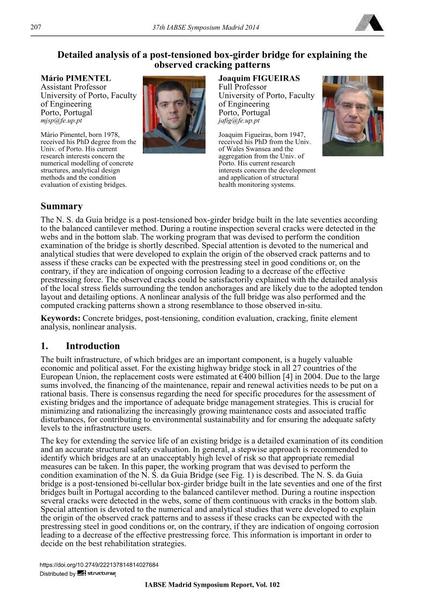Detailed analysis of a post-tensioned box-girder bridge for explaining the observed cracking patterns

|
|
|||||||||||
Détails bibliographiques
| Auteur(s): |
Mário Pimentel
Joaquim Figueiras |
||||
|---|---|---|---|---|---|
| Médium: | papier de conférence | ||||
| Langue(s): | anglais | ||||
| Conférence: | IABSE Symposium: Engineering for Progress, Nature and People, Madrid, Spain, 3-5 September 2014 | ||||
| Publié dans: | IABSE Symposium Madrid 2014 | ||||
|
|||||
| Page(s): | 207-214 | ||||
| Nombre total de pages (du PDF): | 8 | ||||
| Année: | 2014 | ||||
| DOI: | 10.2749/222137814814027684 | ||||
| Abstrait: |
The N. S. da Guia bridge is a post-tensioned box-girder bridge built in the late seventies according to the balanced cantilever method. During a routine inspection several cracks were detected in the webs and in the bottom slab. The working program that was devised to perform the condition examination of the bridge is shortly described. Special attention is devoted to the numerical and analytical studies that were developed to explain the origin of the observed crack patterns and to assess if these cracks can be expected with the prestressing steel in good conditions or, on the contrary, if they are indication of ongoing corrosion leading to a decrease of the effective prestressing force. The observed cracks could be satisfactorily explained with the detailed analysis of the local stress fields surrounding the tendon anchorages and are likely due to the adopted tendon layout and detailing options. A nonlinear analysis of the full bridge was also performed and the computed cracking patterns shown a strong resemblance to those observed in-situ. |
||||
| Mots-clé: |
Pont en béton
|
||||
